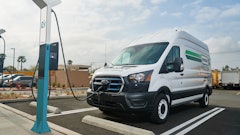
There are lots of considerations when buying a TMS, but one of the fundamental questions that is often asked is: "Just what exactly is a TMS? What should I expect it to do for me?"
The term TMS has come to mean many different things over time. It can incorporate variable modal combinations, variable geography reaches, variable end users and so on. With no standard terminology in an already-complex industry, it's hard to figure out the differences between solutions and which can best add value to your end clients and yield the necessary return on investment to fund the initiative.
One of the best TMS definitions comes from the research and analyst firm Gartner, which describes TMS as a multi-modal shipper-centric system used in a specific region to manage domestic freight operations. A multi-modal TMS is used to plan movements, perform rating and shipping across all modes, consolidate orders, select the appropriate route and carrier, communicate with carrier and manage freight bills and payments.
With this definition in mind, let's take a look at the fundamental needs that the application of this multi-mode TMS should address, as well as the critical importance of understanding not only what a TMS does, but how it works.
The Core of TMS
Execution of transportation will be the glue that holds your supply chain together. At its core, the job of a TMS is to manage all activity and move an order through your system in the most efficient and cost-effective way.
Rating and Contract Management
A TMS should give you fast access to multiple rate option with the ability to develop accurate rating results that inform the best scenario planning for shipments. Most importantly, it should determine the real cost (the actual invoice amount) by taking into account all considerations in real time. This includes factoring contract terms, weekly fuel and accessorial charges upfront.
Planning and Optimization
The ability to factor in all real-world constraints from beginning to end can save you time and money. They key here is to understand not only how your TMS builds an order, but how it responds when the conditions of your order inevitably change. It should be able to help you understand how your routes are affected and which new routing options you should consider.
Execution and Visibility
Visibility improves efficiency and communication for you, your partners and your customers. A TMS gives you the ability to share data with them and provide access to intelligence via dashboards and reports. This transparency can be a competitive differentiator as it puts more actionable intelligence into partners' and customers' hands. Including information about delivery delays, the potential for load savings to incentivize freight consolidation as well as the ability to input purchase orders can create routing requests and instructions.
Freight Settlement
Simplify the entire work flow process, from executing mark-up pricing that considers multiple factors to auditing freight bills and more. A TMS will save you time on freight claim filing and increase savings with better automation, data sharing and accurately allocating freight costs.
Integration
According to the Transportation Planning and Execution Benchmark Study, 61 percent of respondents said the biggest challenge of their TMS was system connectivity. A TMS is only as powerful as its connections. Look for a modern TMS that has a balance of self-service and simplicity. Ask for data and proof regarding integration speeds and timelines.
The "What," Not Just the "How"
Understanding what features to expect from a TMS is important. Understanding how different TMS systems execute on those features is a game-changer. Functional gaps can always be filled with the right system design, but a bad design will impact you for the life of your solution.
Watch out for vendors that sell a low-cost solution. They will only make you rely on them for changes and support later on. Over time, you may find more money going toward a vendor's support services or costly code changes. A TMS that allows you to tune it to your business needs without going to the vendor's development team or bringing in an engineer to write code will help you keep costs low and enable better responsiveness to customer demands.
So dig deep. Don't just pull the first five TMS companies you find on Google. Define your business goals and how you want to accomplish them, then ensure that the TMS solutions you're considering address the challenges discussed above. Understand how the technology approaches your problems and executes solutions, so that you can be confident you've got a solution that will help you increase efficiency and cost-savings now and in the years ahead.



























